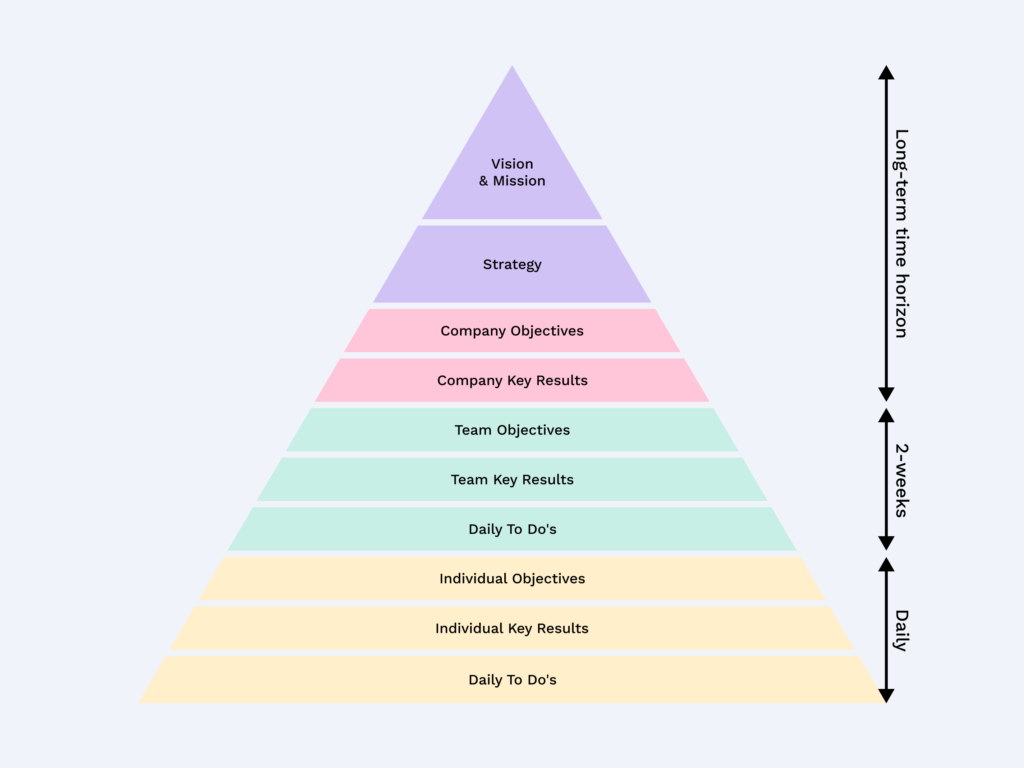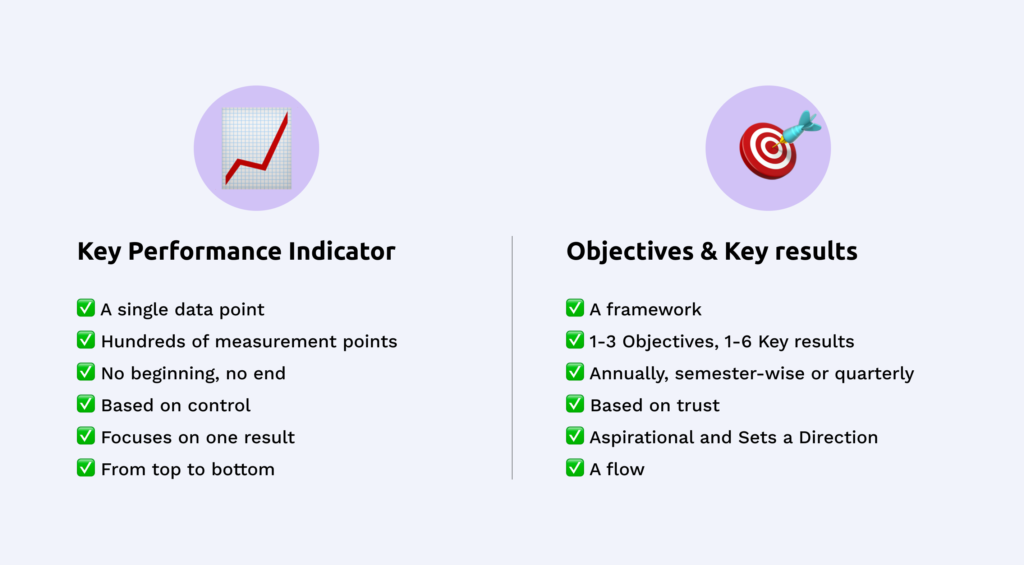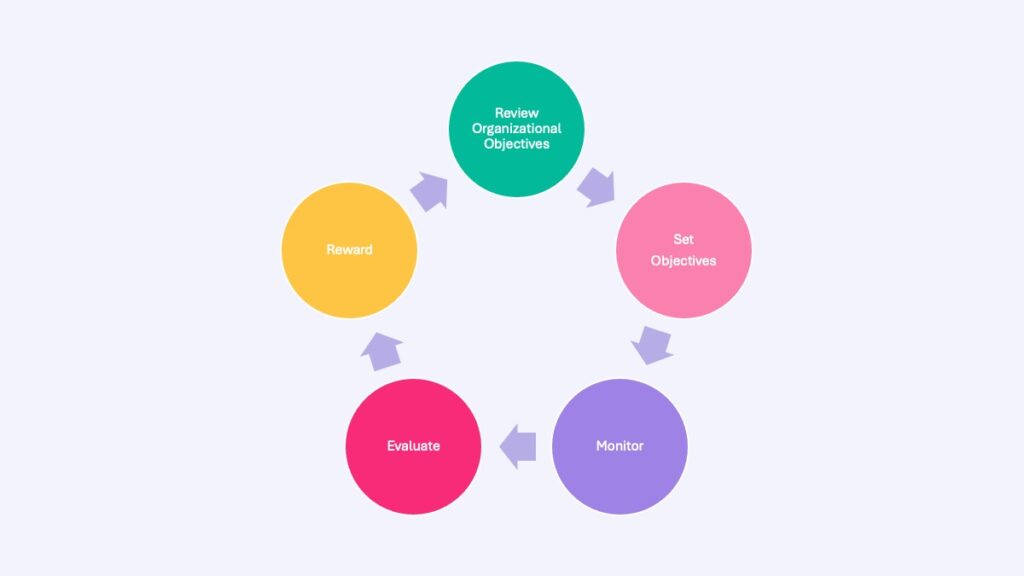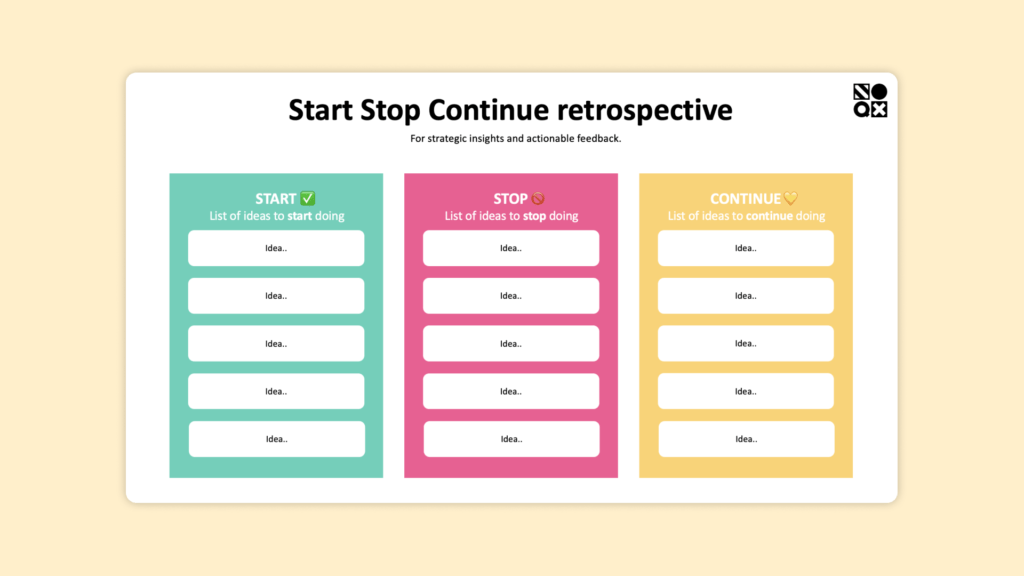Both OKRs and KPIs are well-known goal-setting tools that enhance visibility, productivity, and profitability. In this guide, we’ll delve into everything you need to know, not just defining OKRs and KPIs but also highlighting the distinctions between them. Additionally, we’ll explore how effectively using both OKRs and KPIs can help you achieve your desired results and goals. This guide equips you to maximize these goal-setting tools, creating a strategy that propels success for your business.
What’s OKR?
Objectives and Key Results (OKRs) focus on aligning overarching goals with measurable outcomes. Objectives represent long-term goals and future visions set for the entire company, team, or individual. These goals can span different time frames, such as a quarter, six months, or a full year. OKRs stand out by providing clear, measurable targets rather than vague visions, steering business in a defined direction.
Key Results in OKRs, such as measurable figures, indicate whether you achieve your goal or not. By using quantifiable metrics, you can track progress and make quick adjustments if things don’t go as planned. OKRs act as both a goalpost and a mechanism for agile adjustments.
The OKR framework is highly flexible, becoming more effective when integrated with the efforts of other departments and employees. Engaged employees are key to increased productivity and swift goal development.
Learn more about succeeding with OKRs in our guide.

What’s KPI?
Key Performance Indicators (KPIs) are quantitative tools assessing how well an organization meets specific goals. Each KPI is tailored to different objectives and can be applied to projects, programs, products, and various initiatives. They measure success in areas like sales and social media.
Regular monitoring of KPIs provides a clear picture of organizational progress, pinpointing areas for improvement. KPIs serve as decision-making tools, offering objective performance information and enabling informed adjustments in the company’s or team’s strategy.
Differences between OKR vs. KPI
OKR and KPI both measure a company’s progress but in different ways. OKR helps set goals, while KPI shows how well you achieve them. Here are some significant differences:
OKR:
- Focus on goals and results: Clear, inspiring goals with measurable results.
- Forward-looking: Acts as a future-oriented guide, spurring innovation.
- Flexibility: Encourages adaptability, valuable in dynamic industries.
KPI:
- Result measurement: Reliable metrics revealing different parts of company performance.
- Backward-looking: Reflects on past achievements, providing historical insight.
- Risk of one-sidedness: Potential challenge in fixating on specific metrics without clear ties to overall strategic goals.
In summary, OKRs help set and understand goals better, promote collaboration, and foster engagement. On the other hand, KPIs are mainly used to analyze how well the company is performing. OKRs are more flexible and can be adjusted quickly, while KPIs keep track of things over a longer period. In OKRs, we can connect different goals and support each other, whereas in KPIs, all goals are on the same level and equally important.
OKR vs. KPI: Which is Better?
Choosing between OKRs and KPIs depends on your objectives. KPIs suit ongoing projects or past endeavors, allowing real-time adjustments. For significant business goals, OKRs are better, breaking them into manageable parts for the entire company to contribute to. OKRs keep your team engaged while working towards goals. Remember, you don’t have to choose one; using both OKRs and KPIs for goal-setting and measurement can yield the best results for your business.




